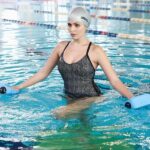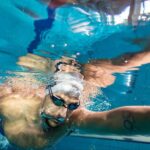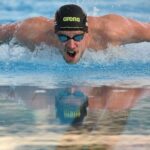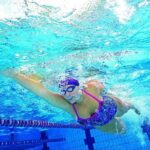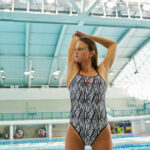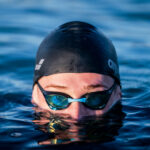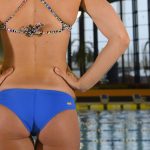Update Your Training to Get a Freestyle Pull Like a Pro
For those of us that feel like we spend more time in the water than on land, swimming like an Olympian is the goal. Optimization is the key to improving your freestyle, every nuance counts, especially the pull phase. The arm pull requires the most energy and gives the biggest results, propelling us forward more than any other part of the swimming stroke.
The freestyle pull is essentially the part of the freestyle’s stroke technique that follows the freestyle catch. After your hand has entered the water and made a decent catch, the pull phase begins once your hand is below your head. As you are pulling your hand back from this position to your hip, you are officially in the pull phase. It’s vital that your pull is on point as it’s the most labor-intensive segment of your freestyle stroke.
How to Improve Your Freestyle Pull
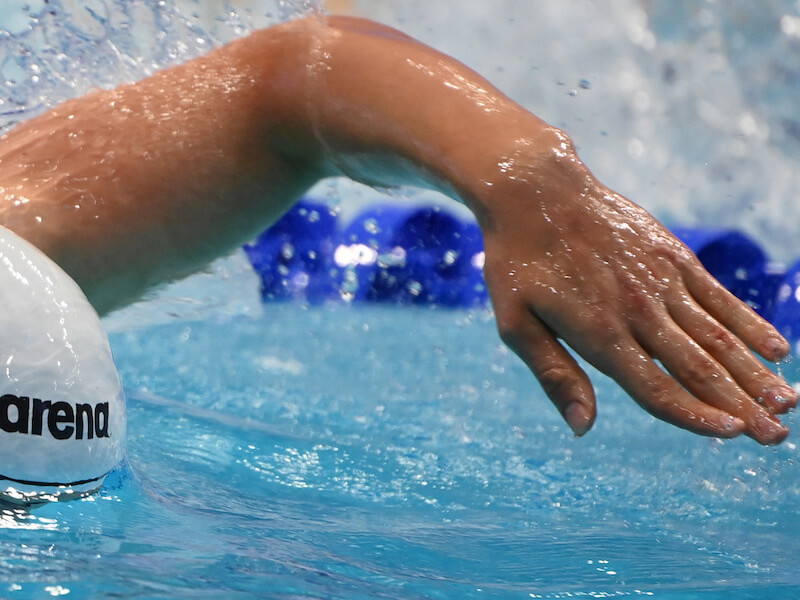
Imagine hitting a nail with a hammer. The ultimate act is the driving of the nail into a piece of timber, yet there are many stages that precede this. Holding the nail, swinging your arm, sighting where the hammer will land, and so on. The freestyle pull is the part of your freestyle stroke where you hit the nail. Everything about the stroke is building up to this moment, so let’s focus on getting it right.
Learn to Stay Straight
Back in the day, many coaches would preach the s-pull technique, where swimmers would sweep their hands in an “S” shape. We now know that that added lateral movement causes more friction within the water with unnecessary body rotation.
These days, the generally accepted technique for a faster freestyle is keeping everything inline. The hand entry is in front of the shoulder, and the entire pull phase is in line with the body too.
Utilize Your Early Vertical Forearm
A good hand entry should end with a full extension of the arm. As soon as this is achieved, you want to get an early vertical forearm as soon as possible. This means getting your forearm to a 90-degree angle, which will give you a high elbow catch. These two phases are before the freestyle pull, but getting them right is essential if you want to complete a successful pull.
Now that you’ve completed the setup for the freestyle pull, your early vertical forearm will act as a paddle throughout the freestyle pull. It’s as if you’re trying to grab as much water as you can with your body and you’re throwing it towards your feet.
If you just keep your arm straight through your entire movements during your freestyle stroke, you are not actually pulling the water. Many coaches use the analogy of pulling your arm over a barrel to bring it towards you.
Get Your Timing Right
There’s already a lot to think about when it comes to perfecting your freestyle pull. Your body’s movements are very important, but it’s also imperative that you get your timing right.
Using one overall speed in your freestyle is what swim coaches call “mono-speed.” Freestylers should avoid doing this at all costs. Learning when to speed up in the stroke is essential to get all of your training to come together.
Between the hand entry and freestyle catch, you should be focusing on getting your arm in the correct position to do some serious pulling. If you move too fast in this section, you’ll create frontal drag, slowing you down.
The time to really dig in and give your full power is when your arm reaches its high elbow catch. At this stage, your arm is in the optimum position to catch the water and propel you forward. Accelerate hard here for the best results.
Tools for a Better Freestyle Pull
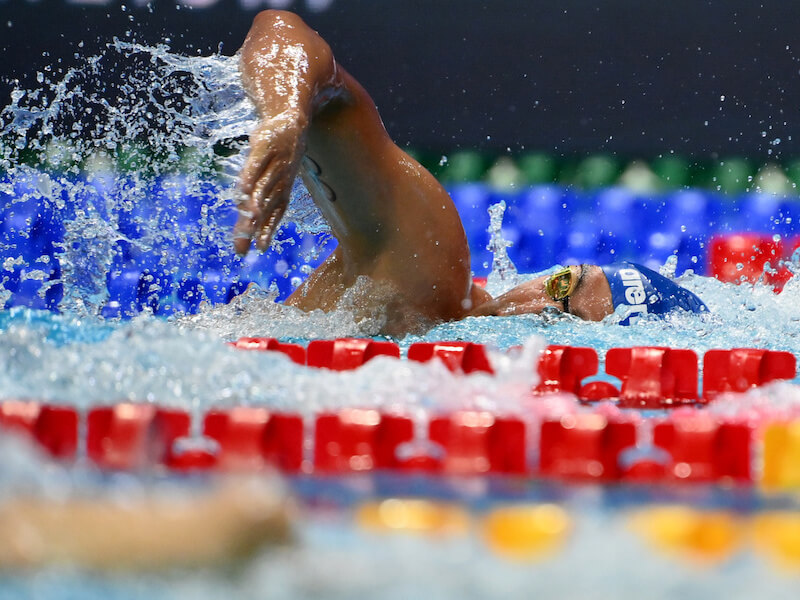
Nothing can beat time spent in the pool training hard when it comes to ways to improve your freestyle technique. But there’s no reason to shy away from using training tools that can help you to improve your freestyle swimming even more so.
Training tools are becoming a much more common sight in swimming pools and in open water. They have the power to make your swimming easier or more challenging and can help you to isolate movements to improve your focus. Let’s have a look at some tools that can help to improve your freestyle pull.
Improve Focus With Swim Snorkels
Using a swim snorkel can be a real game-changer for improving your front crawl. They are also a great training tool with a plethora of different uses. When you use a swim snorkel it takes away your attention from a very important part of swimming: your breathing. You no longer have to move your head out of the water to breathe and plan when to take the most efficient breaths. This makes it easier to bring your attention to whatever it is you are trying to improve; in this case, your freestyle pull.
Now that you can swim full lengths of the pool uninterrupted, you can become much more cognizant of your freestyle pull. Getting that perfect early vertical forearm and timing your acceleration correctly will now become a whole lot easier.
Hand Paddles Make You Stronger
You may have all your timings set to a tee and have perfected your high elbow catch. But you’re still not getting the results you desire. As you give it all you have during your freestyle pull, you’re just not gliding through the water as fast as you imagined.
This could be a strength issue. As tough as it sounds, the only way to improve your strength is to train even harder. To do this, we can either up our volume and intensity, or we can add resistance. Using a hand paddle makes swimming freestyle a more intense workout and will promote muscle growth.
With the right diet, a hand paddle could give you the strength gains your body needs to get a freestyle pull that will leave your competitors in your wake.
Make the Upper Body Work With Pull Buoys
If you really want to get to grips with the different phases of the freestyle, putting all the work on your arms will teach you pretty fast. Using a pull buoy allows your legs to dangle aimlessly behind you, this can help to give similar strength gains as the hand paddles.
But, it will also mean you can feel the impact of each part of freestyle pull better as you’ll be moving more slowly through the water. You’ll be more aware of the frontal drag caused by a bad hand entry or the powerful pulling force as a result of a good freestyle pull.
Freestyle Focus
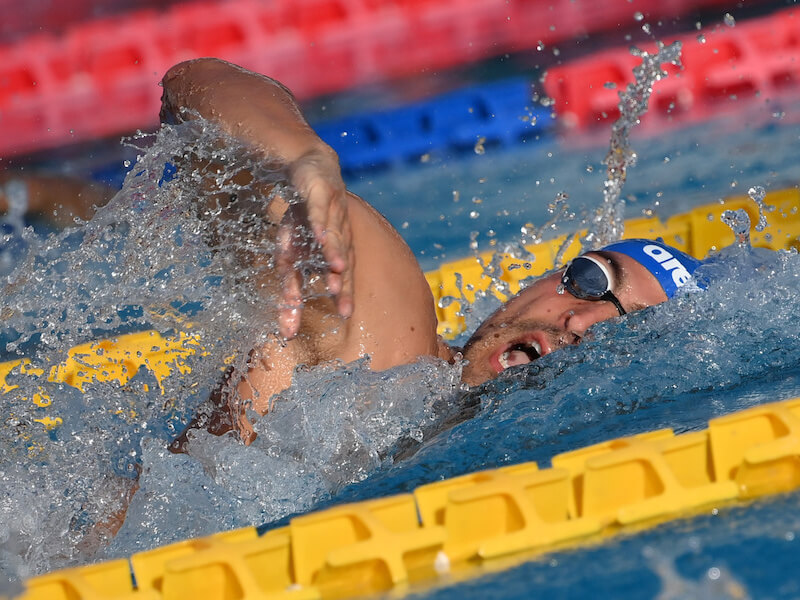
It’s all well and good reading theory and listening to coaches. But there’s no remedy for good old-fashioned training. As with anything in swimming, there’s a lot to take in and so much you can apply to your stroke technique to get those results you’ve dreamed of.
The best approach is to give each training session a focus. For example, in one session you could focus on improving your early vertical forearm. Another time you could film yourself to focus on keeping your body as straight as possible during your freestyle stroke.
Learning how to swim the best freestyle you are capable of is all about bringing everything you have learned together. Just make sure you take it one day at a time.
Check out arena’s line of swimwear and equipment to help you in your training.
Written by:
Thomas Board
Tom is an outdoor and adventure travel writer and full-time firefighter based in Leeds, UK. He spends his free time summiting the mountains of Wales and wild swimming in the lakes of Snowdonia all year round.
